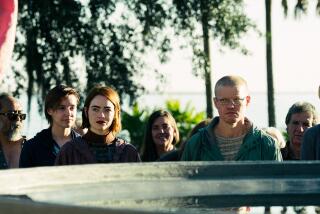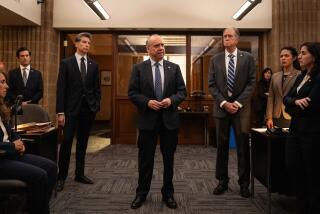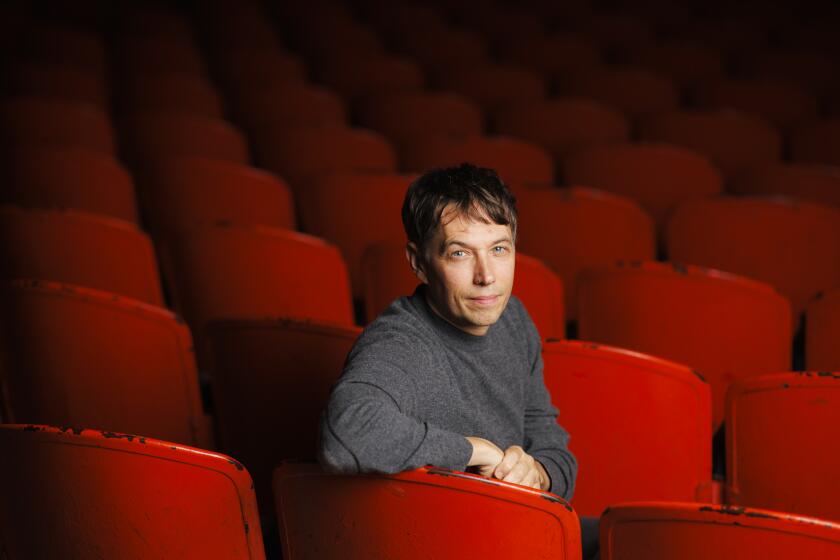Keep ‘em guessing
Having first bounded onto the international filmmaking scene with the twisted money-mystery “Shallow Grave” and the drug-soaked excitement of the epoch-defining “Trainspotting,” British director Danny Boyle has subsequently continued to leap from genre to genre, style to style. As a follow-up to his terrifyingly scabby, digital-video horror film “28 Days Later,” a surprise hit, he has reemerged with the sweetly endearing, kid-friendly “Millions.”
Working with “28 Days Later” cinematographer Anthony Dod Mantle, this time employing an eye-popping color palette and a handful of nifty visual effects, and writer Frank Cottrell Boyce, best known for his work with filmmaker Michael Winterbottom (“24 Hour Party People”), Boyle has crafted a film that emulates a child’s point of view without condescension. In telling its story of two brothers, one who has visions of saints while the other sees only a world of pound notes and Euro coins, Boyle has drawn out two well-rounded performances from his young stars, Alexander Nathan Etel and Lewis Owen McGibbon.
After “Trainspotting” you made “A Life Less Ordinary” and “The Beach” and then seemed to retreat from Hollywood filmmaking. Are you happy with your current relationship to the notion of Hollywood?
Yeah, very much so. I’ve learned a lot about what I’m good at. I’m still ambitious, but I like surprising people by being a bit off the radar and then popping up with it finished. I really admire people who can work with big sums of money, and I love watching those movies. The big thing you learn is that when you’ve got a budget that size, it increases the number of people who work on the film. I like it much smaller, a family-type atmosphere among the crew. You can’t learn everybody’s name on a big crew. So you learn what film gets the best out of you as a director.
Your films are all very different from one another, especially moving from “28 Days Later” to “Millions.” Are you ever concerned about losing whatever audience you might build up from film to film?
One of the terrors of making a film is you think you’re making the same film again and again. I worry that there are ingredients in “Millions” that are a bit like “Shallow Grave,” I worry my films are too similar. I’m always amused when people start interviews by saying, “Wow, this is so different.” It obviously comes across like that, but you don’t always feel that when you’re doing it. We were lucky “28 Days Later” was a big hit because you get a lot of credits, and we kept the budget down on this so we were able to do what we wanted. We didn’t have to worry about that clash of taste which was involved in juxtaposing that film and this film. Although I’m still the same person and they feel coherent to me, I’m sure it’ll be difficult for some people to get on board.
Right from the start, when the boy has his first vision of a saint, the audience knows this is a different kind of kid’s movie. And then when the saint starts puffing away on a joint, you know it’s really different.
The joint was a really interesting question. The temperature of the times in Western life, especially here but in the U.K. as well, is very anti-tobacco, anti-cigarette. The question was, is it going to be a cigarette? What it’s going to be? I said I think it should be a joint, she should light up a joint. The whole thing she says is, it doesn’t matter up there -- everything’s easy. You only have to worry about that kind of thing down here. I just thought it was lovely, they don’t stand on dogma. And I thought they would be very relaxed like that, and that’s how I always imagined it. My mom was a very strict Catholic, a very devout Irish Catholic, but as a person she was so easy about everything. So I felt the saints should be portrayed like that. St. Peter swears a bit.
What was it like working with the two young boys? Did you have to recalibrate your directing style to get the best performances out of them?
You think you’re going to guide them through and as soon as you do that, you can see your fingerprints all over them. It’s horrible. We did some things early on, and when I took a look at it, it was like I was stuffing things into their mouths, like I had them by the back of the neck. It’s fake. They’re so gossamer-fine because they’re not actors, especially the little one, that if you interfere you can spot it really quickly. So you have to find a different way to let the film flow through them.
More to Read
Only good movies
Get the Indie Focus newsletter, Mark Olsen's weekly guide to the world of cinema.
You may occasionally receive promotional content from the Los Angeles Times.











